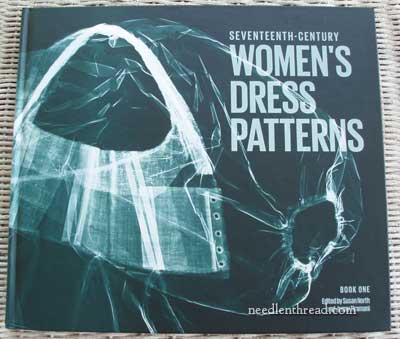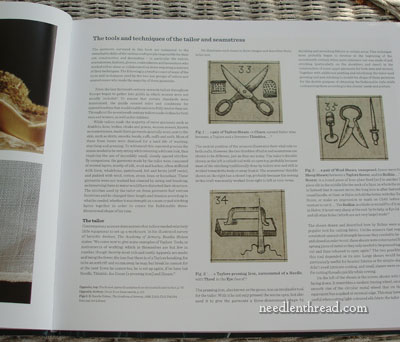NeedlenThread.com» Mary Corbet’s Needle ‘N Thread - 17th Century Women’s Dress Patterns – Boo...
Published: Mon, 07/18/11
I haven’t read the book cover-to-cover yet, but I have lingered over it, studied the pictures (I always look at pictures first!), read parts of it, and wondered.
The book begins with an introduction to the materials of the age – what did the 17th century tailor and seamstress work with, to achieve their masterpieces of style and fashion? That’s covered in the first few pages of the text. Today, we sit at our computerized sewing machine, surrounded by scissors (usually multiple pairs!), pin cushions, needles, iron and ironing board, special lighting and maybe magnifiers, and all kinds of little accessories that we find necessary to our sewing craft. Not so for the tailors of yore – they were equipped with very little, as far as tools were concerned, but they sure got the most of what they had.
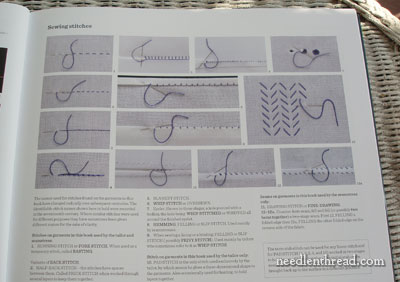
While the book does discuss the historical background of the various subjects addressed, 17th Century Women’s Dress Patterns is mostly an instructional book. And so, you’ll find a section of photos demonstrating the sewing stitches of the day…
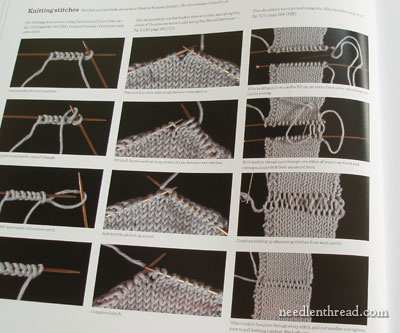
… the knitting method used for creating knit garments…

… and don’t forget the decoration! That’s right – there’s a section of demo photos showing the various embroidery stitches used on 17th century garments.

The book looks at various museum items from the era, and it takes them apart for us, explaining what the piece was made of and how it was constructed.

And then, it breaks the piece down into patterns on grids, so that – yes – you can recreate them, if you want to! Even the embroidery designs are laid out on the pattern pieces.

What would pattern pieces be, without detailed instruction on how to put the pieces together? And the instructions – they’re here, too.
The book contains patterns for five waistcoats (several of which are embroidered), bodices, a cape (or mantle), a linen hood and a linen smock, coif, cuffs, sleeves, a kerchief, linen gloves, and kid gloves.

You’ll find information on bobbin lace and even bobbin lace patterns.

Throughout the book for different pieces, there are photos of x-rays of the museum pieces, that demonstrate how the pieces were constructed.

One of my favorite sections in the book is towards the end. It’s the part on gloves. Considering that gloves were an art in themselves and that it takes some skilled hands to create a perfectly fitting pair of gloves, I’ve always found glove construction fascinating. This latter section of the book answers a lot of questions about glove-making, while providing patterns & instructions (and even the embroidery designs for the elaborate cuffs).
I’ve had the book sitting out for a while at home – the perfect test of its attractiveness to “anyone.” Everyone who drops by for a visit, sits for a moment within reach of the book, or just happens to catch a glimpse of it, ends up browsing through it in fascination. And these are people who think my infatuation with needlework is a bit over-the-top. They aren’t into textiles. But…. they like the book! I suppose it’s the universal appeal of clothing (!) and the general fascination that most people have with the past, all woven into one book!
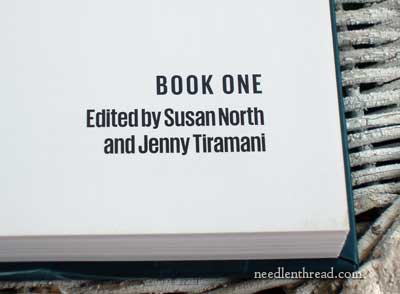
Incidentally, I found this rather enticing. Book One? Does that mean we get a Book Two some day?
I like the book! I think anyone interested in textile history, in costuming, in history, in sewing will like it, too! And chances are, their visitors will, too….

Home | How To Videos | Needlework Books | Patterns | Tips & Techniques | Pictures |

